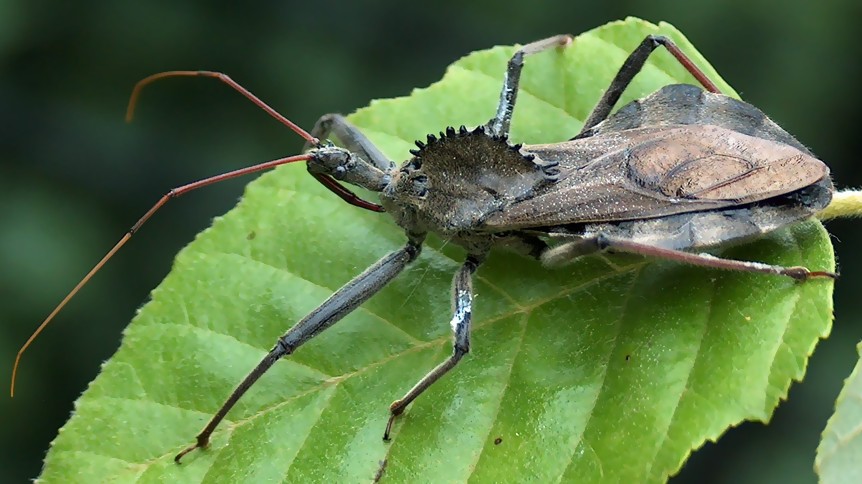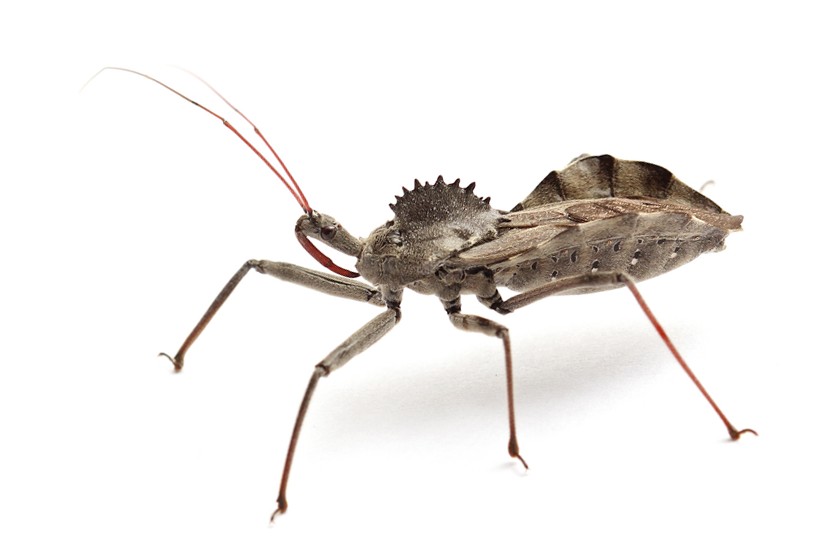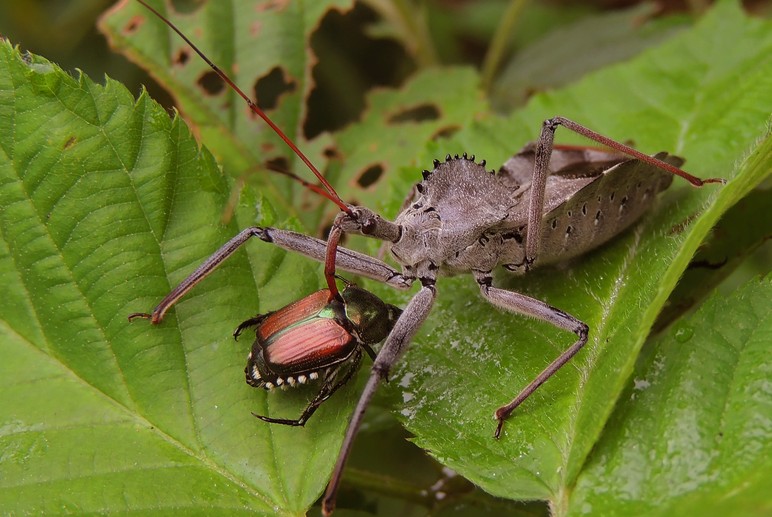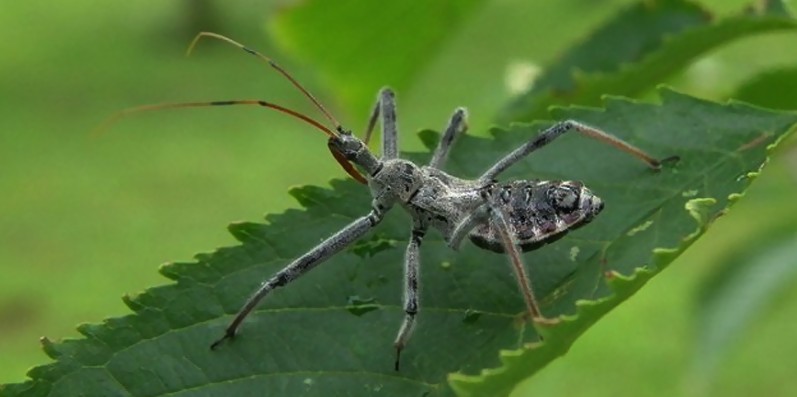Wheel Bug
What is Wheel Bug?
The wheel bug, also known as ‘Arilus Cristatus,’ is an insect that is commonly found in various regions of the United States. These unwelcome creatures, with a crowned wheel in their thoracic cavity, are an inseparable part of the Reduviidae family. Wheel bugs can sting a person just like any other insects, and when they do, they cause agonizing pain. If truth be told, the appearance of these critters seems weird. However, they can easily be pondered over like a small beast with scrawny head and abdomen shaped like a speedboat.

Considered to be the members of the assassin bug family, these pests (with a large size) are known for their painful bites, if they are not properly taken care of. After all, who would even think of getting bitten by an insect undoubtedly belonging to the assassin bug family?
These bugs have a scary appearance. So, when you get up close and personal with one of these, they send a shiver of fear down your spine. And, it is extremely crucial for you to know that these insects bite, not unless provoked. In fact, any insect would show you their true colors of biting you, if they feel that the people around them are disturbing enough.
However, these bugs won’t even try to harm you. Are you eager to know why? This is because wheel bugs prefer to keep themselves secluded. They don’t like to come in contact with humans, and they are not aggressive in general if you are thinking otherwise.
Found not only in meadows but also on trees as well as shrubs throughout Kentucky, the wheel bug, being a giant insect, is not uncommon throughout the year. However, the adult may be spotted in the following summer season. This bug has got its name from the appearance of a wheel, shaped like a cog budding from the top of the thorax. Adult bugs of these species frequently are fascinated by lights near wooden areas.
Wheel bugs are a group of around two dozen different species. It is not rare for a gardener to have a close encounter with somewhat smaller members of the family with normal looks, which comprise the spined assassin, the masked hunter and numerous species within the Zelus genus. Every assassin bug makes use of its coarse front legs for the surprise attack the bug has for their prey insects. The wheel bug then uses its long mouthpart to pierce its prey. They are full of lethal venom that they inject the prey with. Once done, the prey is killed within a fraction of seconds.
Identification

Picture of Wheel bug
The adult wheel bug generally measures from an inch to 1.25 inches in length. This creature is dark, aside from being powerful. It has long legs with antennae, large eyes on a slender head and a major thoracic, hemispherical crest that bears a resemblance to the comb of a chicken. Wheel bugs are the only critters in the U.S. with this crest. And, the number of teeth in the crest differs from 8 to 12.
Female wheel bugs seem a lot larger compared to their male counterparts. They have their abdominal margins extensively uncovered in them. The overall color of the female members of this species of bugs is dark brown.
At first sight, the wheel bug unquestionably appears to be an unsafe/terrifying creature because of their wide size and peculiar appearance. But, these bugs are not violent and will prevent themselves from making contact with humans. However, if not handled with care, the wheel bug will make every effort to bite the person. When bitten, the person attacked with a bite suffers extreme pain with the sensation that lasts a few minutes.
This insect is well-known for its unbelievably dreadful bite when casually handled. This bug attacks other pests with a series of brutal stabbing motions using its ‘fang’ located at the front of its head. This fang is no different than the one used to stab the individuals who cause annoyance to it.
Distribution
The wheel bug comes about in Florida. In fact, these ferocious creatures have been reported California to Rhode Island west and Florida and south to Texas.
These bugs inhabit fields, gardens, and woodlands from New Mexico to Massachusetts. However, this bug happens to be a mysterious animal, which is cautious of humans.
What do Wheel Bugs Eat?

Picture of a Wheel bug Eating
Adult Wheel bugs, as well as nymphs, are not very fussy eaters. As an alternative, these bugs eat soft-bodied insects, including aphids and caterpillars. However, you will also find them feeding on the following insects, like:
- Beetles
- Sawflies
- Japanese beetles
- Leafhoppers
- Hornworms
- Cucumber beetles
- Lygus bugs
- Bees.
Like several other true bugs, stink bugs, leafhoppers, aphids and cicadas, wheel bugs are equipped with straw-like mouthparts that are adapted for the purpose of sucking nutrients – the juices of other creepy little critters. This bug bites its prey when it comes in its contact and releases a suppress toxin that causes the tissues of the prey to soften. The wheel bug then uses its straw-like beak to suck up the meat of the prey.
Are Wheel Bugs Beneficial to your Garden?
Yes indeed! This is because the majority of Wheel bug’s prey is considered harmful; so they are immensely beneficial to your garden and other wooded areas. They cut down the numbers of a few bothersome pests. In reality, these bugs should be regarded as one of several helpers.
Gardeners are literally fond of ravenous wheel bugs. Even though they are a type of assassin that’s highly adept not only at hunting but killing its prey, wheel bugs keep every pest out of your garden. Commonly found in vegetable gardens and a myriad of home landscapes across the U.S., anyone who has caught sight of these adult bugs will never forget them.
Wheel Bugs – More of a Garden Friend to Many!
Well, their ability for feasting on other harmful insects is the major reason why you should encourage these bugs in your garden if you are looking to keep it pest free. Adult wheel bugs prefer eating a wide range of pest insects, including Beetles, Caterpillars, Grasshoppers and Medium-sized Stink Bugs.
Wheel bugs that are not fully formed are also rapacious predators that feed on several small insects, like aphids.
As mentioned above that wheel bugs are benefiting your garden every step of the way, and control isn’t recommended. They are usually not very plentiful and don’t require insecticidal sprays.
Look out for wheel bugs in weeds, bushes, flowers, and trees. They are usually found on their own because they’re also hunted, apart from being voracious hunters. Not only can they bite, but they can release their poison a distance of around twelve inches. Doesn’t that sound pretty impressive? Keeping this in mind, you should keep looking for them in your garden or yard.
How to Get Rid of Wheel Bugs?
As you know by now wheel bugs, being a useful and not to mention, a voracious predator, can keep your gardens as well as farms out of harm’s way from a range of worrisome pests. But, if you think that these creatures are striving to gain access to your house, you must act smart before it’s too late. Consider using natural methods and make them stop right at the entrance door. Make sure you prevent these bugs from getting the entry in your house — no need to eliminate them.
So, when it comes to getting rid of wheel bugs and not allowing them to enter your home and to cause harm to you or your family make sure you opt for a solution that includes exclusion and chemical treatments by the use of insecticides.
No matter you have a small occurrence of wheel bugs or are tackling with a large infestation (maybe in or around your home), there’s a simple solution for you to execute four easy steps, including:
- Identification
- Inspection
- Control
- Prevention
It is important for you to know that lights easily catch the attention of wheel bugs. So, you must do what you can to restrict lights outside your home at night. Besides, you should keep screens not only on your doors but to windows as well.
Facts
Here’s a list of some of the most interesting facts about wheel bugs:
- Also called assassin bugs, wheel bugs are true bugs that can benefit you when it comes to saving your yard or garden.
- Wheel bugs are deemed to be one of the world’s largest bugs.
- If you annoy the wheel bug, they will emit a bitter smell from their anus that’s present in red as well as orange colored sacs.
- They have a pair of antennae that helps them not only in moving and waving, but testing the air as well.
- The male wheel bugs are comparatively smaller in length than their female counterparts.
- It’s always good to have these bugs in your garden or yard, as they will keep it unharmed.
Pictures of Wheel Bugs
Take a look at some of the wonderful pictures of wheel bugs:


